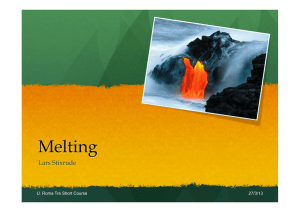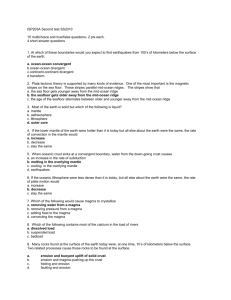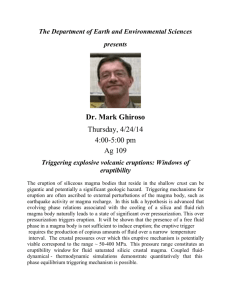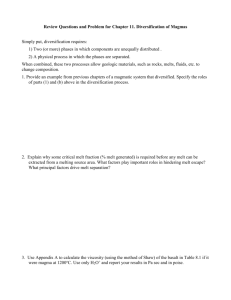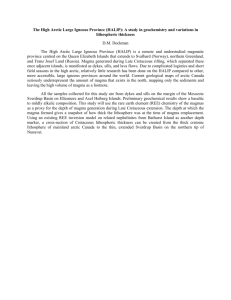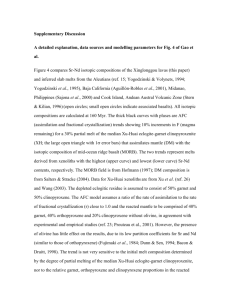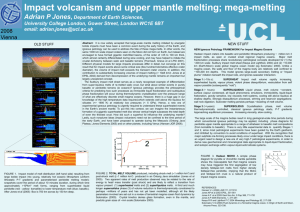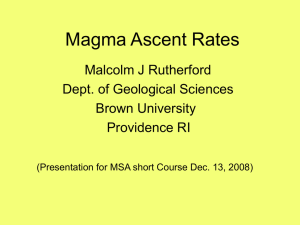Arcay_Diane_Poster - SWISS GEOSCIENCE MEETINGs
advertisement
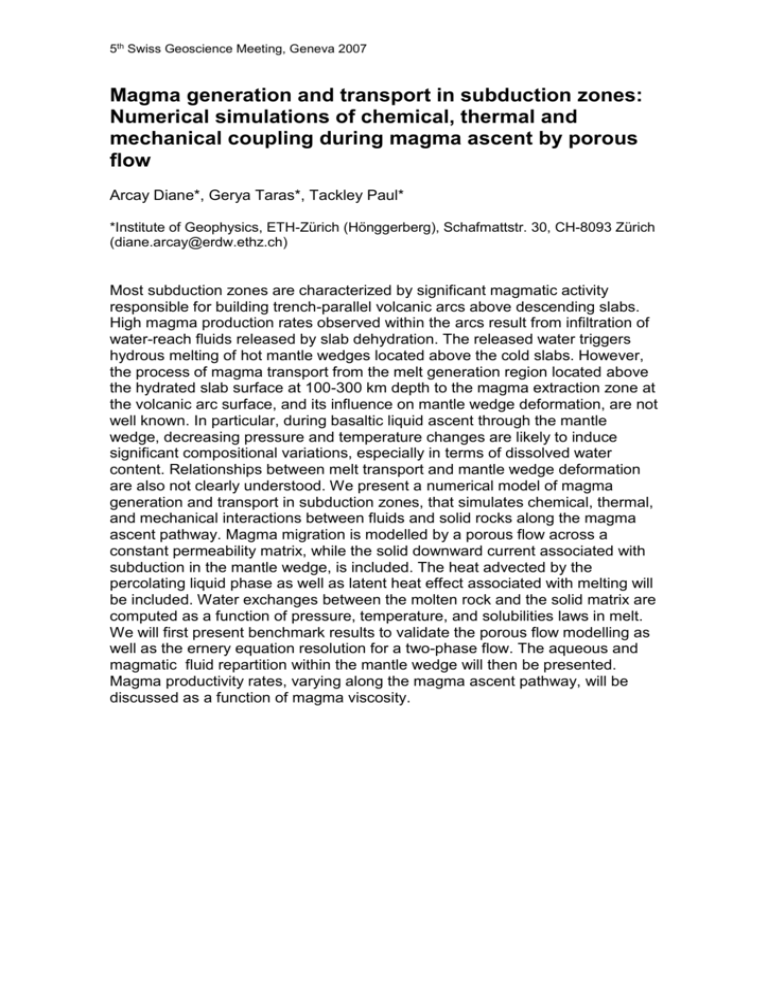
5th Swiss Geoscience Meeting, Geneva 2007 Magma generation and transport in subduction zones: Numerical simulations of chemical, thermal and mechanical coupling during magma ascent by porous flow Arcay Diane*, Gerya Taras*, Tackley Paul* *Institute of Geophysics, ETH-Zürich (Hönggerberg), Schafmattstr. 30, CH-8093 Zürich (diane.arcay@erdw.ethz.ch) Most subduction zones are characterized by significant magmatic activity responsible for building trench-parallel volcanic arcs above descending slabs. High magma production rates observed within the arcs result from infiltration of water-reach fluids released by slab dehydration. The released water triggers hydrous melting of hot mantle wedges located above the cold slabs. However, the process of magma transport from the melt generation region located above the hydrated slab surface at 100-300 km depth to the magma extraction zone at the volcanic arc surface, and its influence on mantle wedge deformation, are not well known. In particular, during basaltic liquid ascent through the mantle wedge, decreasing pressure and temperature changes are likely to induce significant compositional variations, especially in terms of dissolved water content. Relationships between melt transport and mantle wedge deformation are also not clearly understood. We present a numerical model of magma generation and transport in subduction zones, that simulates chemical, thermal, and mechanical interactions between fluids and solid rocks along the magma ascent pathway. Magma migration is modelled by a porous flow across a constant permeability matrix, while the solid downward current associated with subduction in the mantle wedge, is included. The heat advected by the percolating liquid phase as well as latent heat effect associated with melting will be included. Water exchanges between the molten rock and the solid matrix are computed as a function of pressure, temperature, and solubilities laws in melt. We will first present benchmark results to validate the porous flow modelling as well as the ernery equation resolution for a two-phase flow. The aqueous and magmatic fluid repartition within the mantle wedge will then be presented. Magma productivity rates, varying along the magma ascent pathway, will be discussed as a function of magma viscosity.
